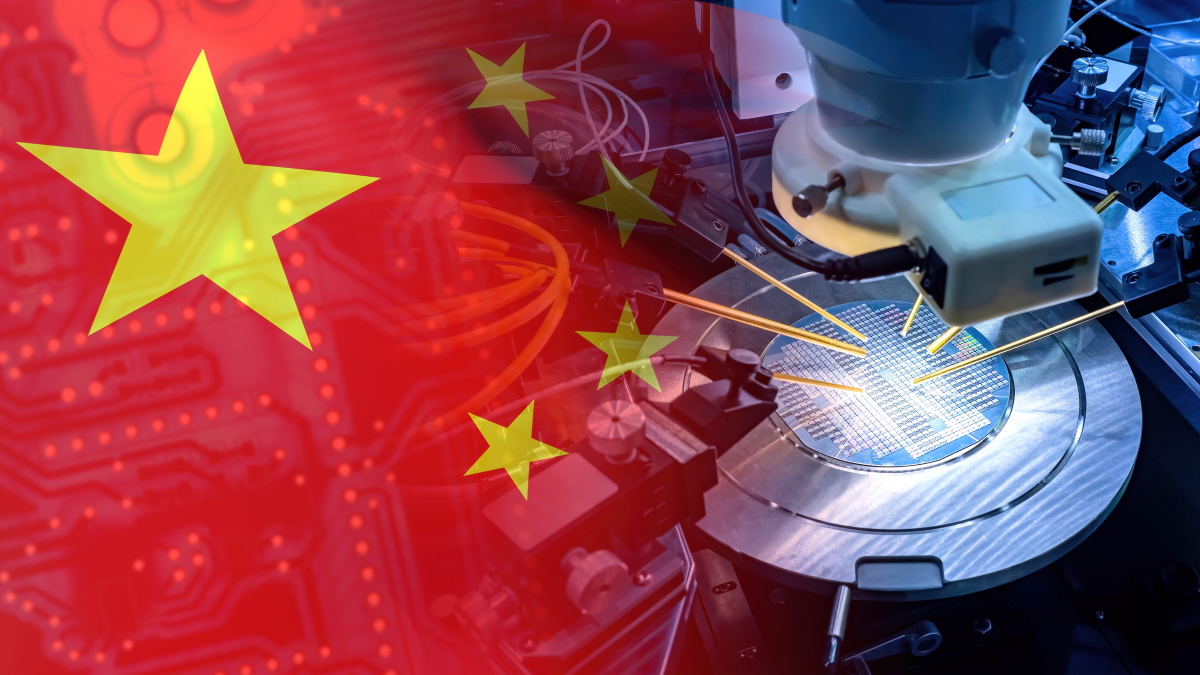The world two largest economies, China and the United States, are engaged in a stern competition to dominate the global tech industry. China wants to achieve long-term technological independence to counter any potential sanctions from the US, from where majority of technology knowledge flows.
Beijing has invested extensively in technological sectors ranging from semiconductors, data security, and electronics equipment or services to insulate itself from Western sanctions that have recently broadened to the high-tech industry.
The US government ban on China’s biggest smartphone maker Huawei in 2020 prohibited shipments of electronic components and software from the US. Soon after China’s largest chipmaker SMIC was added to the US sanctions under the Trump Administration’s Phase 1 deal. Meanwhile, the Biden Administration has maintained a high level of consistency with sanctions, including restrictions against China’s military-industrial complex and surveillance technology businesses.
China’s age of tech transformation
China’s 14th five-year plan, which runs from 2021 to 2025, emphasises self-reliance in research and technology. Over the next five years, the country plans to invest $1.4 tn in infrastructure technologies such as artificial intelligence (AI), semiconductors, and 5G networks.
Aiming for self-tech reliance, China has become world’s second-largest spender on research and development (R&D), after only the US, accumulating over 20% of worldwide R&D investment, data from UNESCO Institute for Statistics showed (as of 8 September 2021).
To keep up with global competition, China’s R&D spending hit a record high of 2.44% of GDP but is still far from America’s 3%. The government and business R&D investment combined reached a new high of $440 bn last year, up from $350 bn in 2020. China has been topping the global patent filing rankings since 2019 and plans to increase its R&D spending by more than 7% in the next five years. The country currently ranks 15th in the global innovation index.
China’s rising chip industry
China intends to attain semiconductor self-sufficiency, a challenging task due to the fragmented nature of chip manufacturing. The Semiconductor Industry Association pegs China’s 2020 semiconductor imports at $380 bn, higher than it spent on importing crude oil.
China is trailing behind the US, Japan, Europe and Korea in chip manufacturing, and accounts for only 7.6% of total global semiconductor sales. In comparison, the United States presently has a global share of semiconductor manufacturing of 12%, down from 37% in 1990.
According to the Semiconductor Industry Association (SIA)’s report, China will be competitive in memory, mature node logic foundries, and fabless chip design, but it will continue to trail in leading-edge logic foundry process technology, general purpose high-end logic, advanced production equipment, and materials for some time.
China’s latest five-year plan calls for the country to generate 70% of the chips it consumes by 2025, up from fewer than 20% last year. China has over 22,800 new semiconductor firms as of 2020, up 195% from the previous year, as a result of money invested in semiconductor programmes.
China delinking from the US dollar
To prepare for the possibility of US sanctions, China has developed its own financial messaging network for mainland cross-border transactions, called Cross-Border Interbank Payment System (CIPs). It promotes the use of China’s yuan in international trade settlements in competition with SWIFT and America’s Clearing House Interbank Payments System (CHIPS).
However, China’s yuan payment system is still in nascent stage, compared to Belgium based SWIFT, that handles most global money transfers, with its 11,000+ institutions.
Amid the ongoing Russia-Ukraine crisis, the US has announced sanctions on some Russian banks, blocking them from the SWIFT system. This is likely to benefit and accelerate expansion of China’s CIPS. As China is Russia’s largest commercial partner for both exports and imports, several Russian banks are linked to CIPs, analysts at China Securities Co (CSC) told Reuters. As per CIPS data, the system has been joined by 1,280 financial institutions in 103 countries and regions by January 2022.
An additional measure to delink from USD transactions is the introduction of digital yuan, which could open doors for direct yuan-based transactions without the need for an intermediary, per South China Morning Post. A key feature of digital yuan is the ability of instant remittance, which could exponentially speed up cross-border transactions.
China’s enterprise software sector continues to evolve
China’s technological rivalry with the United States in several important software segments such as microchips, operating systems and cloud services have prompted Chinese companies to speed up indigenous development in a bid to catch up with foreign rivals. Chinese enterprises have invested roughly $4 bn in the development of operating systems between 2019 and September 2021.
Washington’s anti-China policies have also led significant growth in China cloud service providers. In the meantime, the government continues to encourage large enterprises that currently use Oracle and SAP to switch to a domestic alternative such as Yonyou and Kingdee. JP Morgan’s recent report suggests that cloud solutions by Alibaba, Tencent and Kingsoft are well positioned relative to Amazon Web Services (AWS), Azure and Google Cloud Platform (GCP) in the US. These Chinese internet businesses are investing heavily in the digital infrastructure that will support important government objectives – notably, the smart grid and greater industrial automation.
Official data showed that China’s software sector’s combined profits rose 7.6% y-o-y to nearly $188 bn last year, while China software exports rose by 8.5% y-o-y to $52.1 bn. However, in comparison to China, enterprise software penetration is around 15 times higher in US. “The relatively low penetration of enterprise software in China creates an enormous market opportunity”, the JP Morgan report added.










 Australia
Australia China
China India
India Indonesia
Indonesia Japan
Japan Malaysia
Malaysia Philippines
Philippines Singapore
Singapore South Korea
South Korea Taiwan
Taiwan Thailand
Thailand Vietnam
Vietnam Germany
Germany Hong Kong
Hong Kong USA
USA Switzerland
Switzerland Singapore
Singapore
 United Kingdom
United Kingdom








